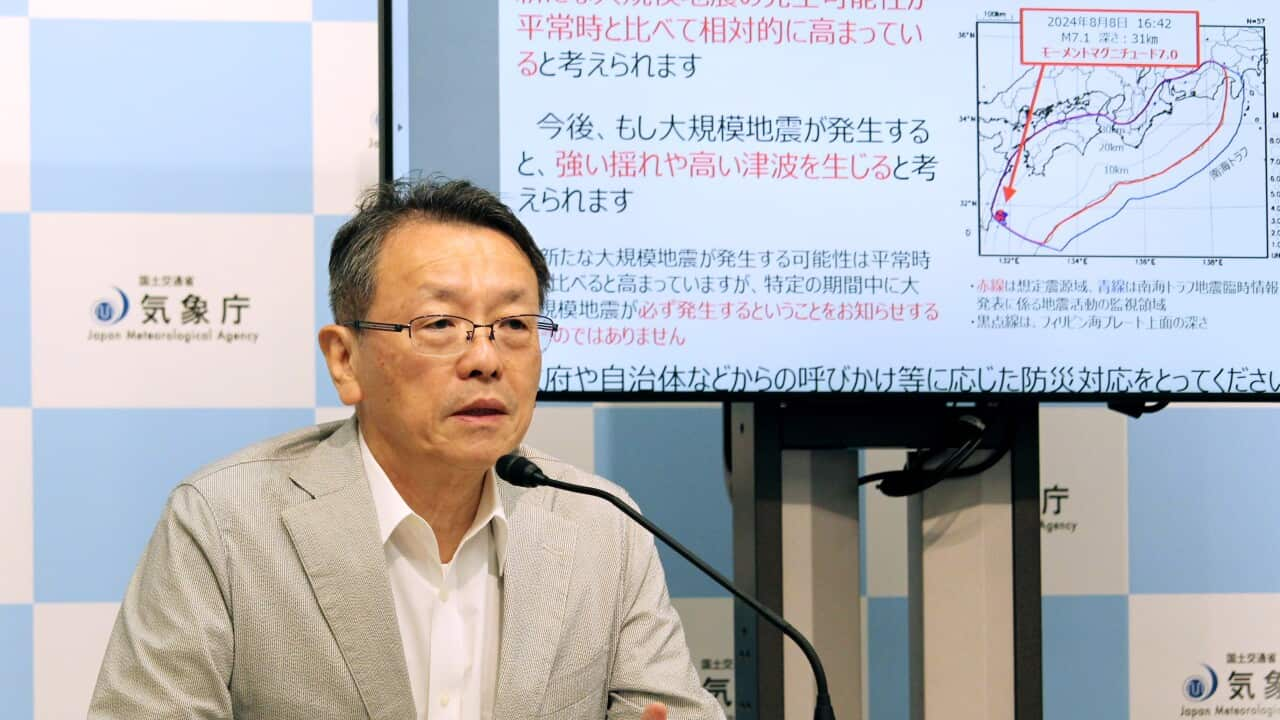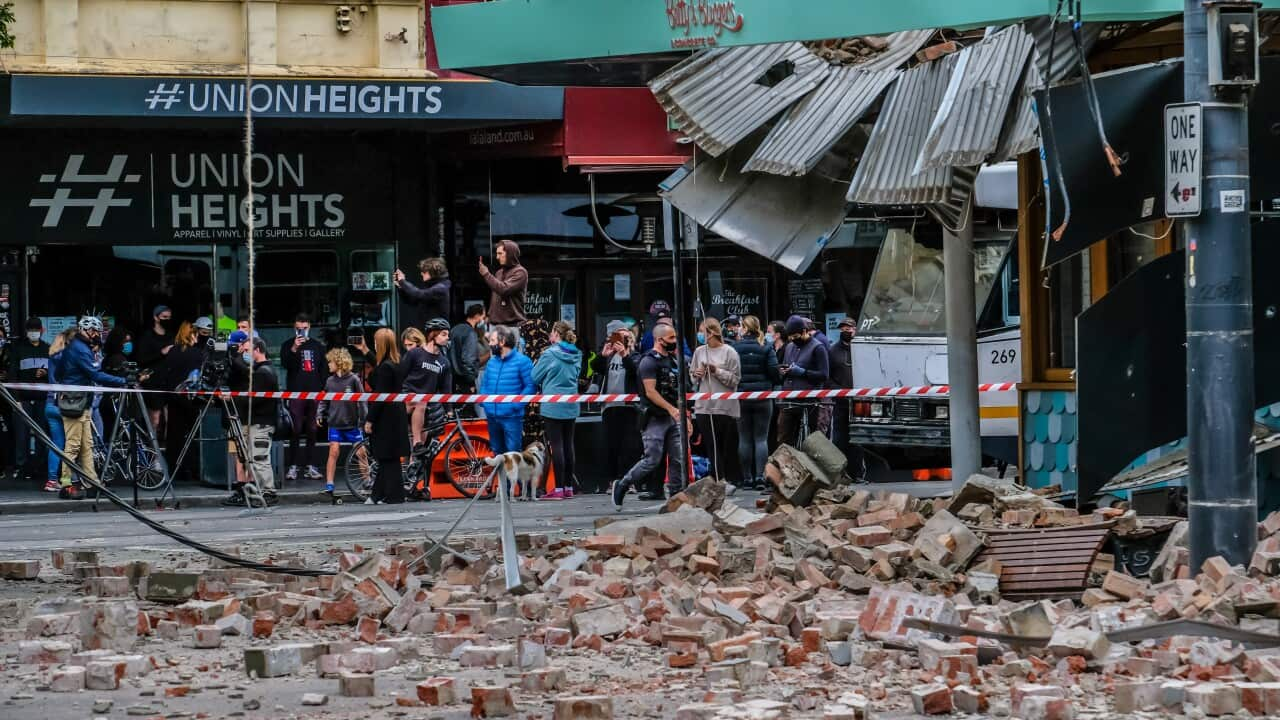Japan faces an increased risk of a "major earthquake" striking off its southeastern coast, according to the country's meteorological agency.
A major earthquake — also referred to as a 'megaquake' — is an earthquake that reaches a magnitude of eight or above on the Richter scale, which measures the strength of quakes.
Japan estimates the next megaquake in the Nankai Trough off its southeastern coast could reach a magnitude of 9.1.
The warning comes after a magnitude 7.1 tremor, which only caused limited damage, struck the southern island of Kyushu on 8 August — although it wasn't triggered by tectonic activity in Nankai Trough.
The quake advisory panel of the Japan Meteorological Agency has warned residents living in areas that could be affected by another shock to review evacuation procedures and stay vigilant.
Following the unprecedented advisory warning, Japan's prime minister cancelled a trip to a summit in central Asia, saying that he wanted to ensure "our preparations and communications are in order".
Why can't we predict earthquakes?
The meteorological agency's warning isn't an ironclad guarantee that another quake will occur, just a forecast of an increased likelihood, said Adam Pascale, seismologist and chief scientist at the Seismology Research Centre earthquake observatory in Melbourne.
"If you have an earthquake of a particular magnitude, there is a small chance that it's a foreshock to a larger event," he said.
Pascale said infallible prediction of earthquakes was impossible as no geological events consistently preceded them.
"A lot of studies are looking at this; is there anything we can measure that indicates that a fault is going to release its stress?"

A tsunami triggered by a 7.6 magnitude earthquake in Japan's Ishikawa Prefecture on New Year's Day 2024 damaged more than 4,800 houses, nearly half of the town's homes, and killed 100 of its 12,500 inhabitants. Credit: EPA
“All that we can do is be prepared (for earthquakes). The whole point of this warning is to bring to people's minds to be prepared."
Where are megaquakes most likely to occur?
The Nankai Trough is an approximately 900km-long fault line along which one tectonic plate is sliding underneath another — a process known as 'subduction'.
Megaquakes "generally happen at a subduction zone ... that's where you can have the most stress built up," Pascale said.
"The magnitude of the quake is determined by the rupture area — that's the length and the depth of face. In megathrust events, you'll generally get a metre or more of movement of the sea floor."

A 'megaquake' in the region could generate a tsunami wave of 30m, with Japanese officials predicting over 300,000 deaths. Credit: /AP
The Japanese government had previously predicted a 70-80 per cent chance of a magnitude 8-9 earthquake happening along the Nankai Trough in the next 30 years.
What would be the effect of a major earthquake at the Nankai Trough?
"Every time you go up one magnitude unit, you've got 10 times the amplitude of shaking and 32 times the amount of energy being released. So the effects are amplified exponentially," Pascale said.
Tsunami waves of up to 30m may reach Japan's Pacific coast within minutes after the quake, depending on the epicentre and tidal situation.
Coupled with landslides and fire, the disaster would be expected to claim the lives of as many as 323,000 people and destroy 2.38 million buildings, forcing nearly 10 million survivors to evacuate.
In March 2011, a 9.0 magnitude earthquake and tsunami struck northeast Japan, killing nearly 20,000 people and causing a meltdown in Fukushima, leading to the world's worst nuclear disaster since Chernobyl.
With additional reporting by the Reuters news agency.










